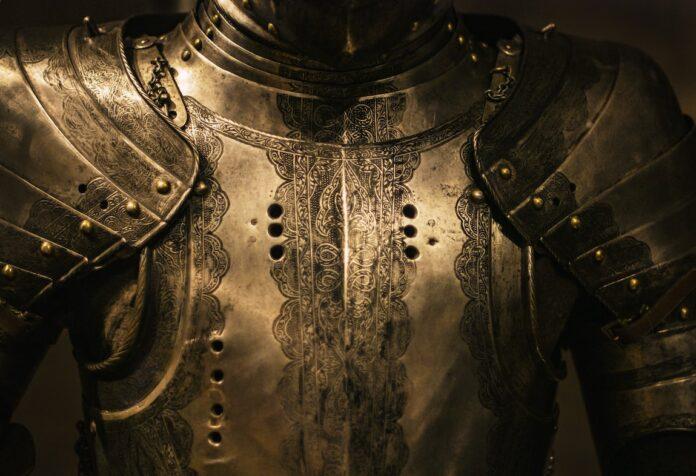In the 11th century, Turks from Tatarstan dominated several regions of the East and became Mohammedans. They conquered Jerusalem, killed thousands of Catholics, destroyed churches and other holy places.
Newsdesk (Gaudium Press) The new Turkish empire established its capital in Nicaea, where they massacred those who believed in Christ, imposed a torture much worse than death on virgins and circumcised children.
In order to liberate Jerusalem, dominated by the Turks in 1073, four large armies set off from different regions of Europe, planning to meet in Constantinople.
Godfrey de Bouillon: prototype of the authentic Crusader
The army commanded by Godfrey de Bouillon was made up of 90,000 warriors – including 10,000 knights – French from the North and East, Belgians and Germans. His brothers Baldwin and Eustace also took part in it. After the conquest of Jerusalem in 1099, Baldwin became its king and Eustace returned to France where, having become a widower, he then became a monk.
Saint Ida, mother of these valiant warriors, donated her entire fortune to the Crusade. Godfrey placed his army under the protection of Saint Michael the Archangel.
The princes and knights considered Godfrey their model, the soldiers their father, and the people their support. He was “a magnificent man morally and physically, tall, with broad shoulders and a distinguished countenance, endowed with a superhuman strength and courage, but at the same time modest, generous, of exemplary piety, the prototype of the authentic Crusader.“[1]
As a young man, through a mistaken interpretation of the obligation of fidelity to the emperor, he had supported the wicked Henry IV against Pope Saint Gregory VII. But he deeply repented of his sin and took a vow to go to the Holy Land.
Bishop Ademar de Monteil: coordinator of the armies
Count Hugo de Vermandois, brother of the King of France, Philip I – who was excommunicated -, captained the French warriors of the central region, as well as those from Normandy brought by Duke Robert Courteheuse, son of William the Conqueror. However, after participating in the taking of Antioch in June 1098, Hugo returned to Europe…
Raymond de Saint-Gilles, Count of Toulouse, commanded 100,000 crusaders from the South of France, under the spiritual guidance of Bishop Ademar de Monteil, who had made a pilgrimage to the Holy Land and knew all the problems of the East.
Saint-Gilles took his wife and a baby son with him. Although he was a great warrior, on several occasions he was carried away by envy and had serious disagreements with the crusade’s leaders.
The fourth army was under the orders of Bohemond, Prince of Taranto – Southern Italy – assisted by the valiant Tancred, Duke of Sicily and Calabria. The former was the son and the latter the grandson of the celebrated Robert Guiscard, of the Viking race, who had died some ten years earlier.
The responsibility of coordinating the actions of the army leaders was entrusted by Pope Blessed Urban II to Bishop Ademar de Monteil. At the start of the Crusaders’ march in the South of France, this worthy prelate blessed them and sang the Salve Regina, which, according to some authors, he himself composed.
The Crusaders defeated the Sultan of Nicaea.
In early 1097, the four armies met in Constantinople, which had joined the schism of the East four decades earlier by rejecting the Pope. The Emperor of Byzantium, Alexios Komnenos, besides being schismatic, was a cunning and deceitful individual.
In exchange for food aid to the crusaders, Alexios demanded that all the territories they conquered belong to his empire. Of a treacherous spirit, he made contacts with the Turks in order to attack the Catholic warriors on their march towards Jerusalem.
In May 1097, the Crusaders gathered near Nicaea, where ecumenical councils had been held centuries before. The city was surrounded by solid walls and wide moats.
The Crusaders numbered 600,000 on foot – including soldiers and pilgrims of both sexes – and 100,000 knights. It was necessary to spend a week preparing battering rams, turrets, catapults, to begin the combat scheduled for the Solemnity of Our Lord’s Ascension.
The Sultan who ruled Nicea had previously withdrawn from the city in order to gather Muslims in the vicinity to fight the Crusaders. Under his command, thousands of infidels charged themselves against ours, who defended themselves strongly and then went on the counter-offensive.
The rays of a burning sun made the gold and silver of the Crusaders’ helmets and shields shine on the plain. “The knights, with their lances raised, formed a sort of living and vibrant iron wall. Seeing this, terror gripped the hearts of the Turks,”[2] who, with the Sultan at their head, fled in terror leaving 4,000 dead and many prisoners.
The Crusaders then with “their machines threw more than a thousand of those heads [of the Turks] into the city”[3] in order to communicate to the inhabitants the defeat of their sultan.
… but Emperor Alexios seized the city
The besieged threw poisoned arrows against the crusaders; any wound caused by them was mortal. High on the wall, a Muslim archer of gigantic stature shot arrows that killed countless Catholics.
The brute walked on the walls shouting insults against God and our people; boastful, at certain moments he removed his armour, threw down his shield and shouted louder. Godfrey prepared a catapult, and when the giant’s chest was bare, he threw a stone which killed him instantly; his corpse fell at the Crusaders’ feet.
Then the Crusaders, preceded by the bishops and priests, made a procession around the city during which holy water was sprinkled and prayers were said.
Through a ruse, the crusaders managed to knock down an important tower in Nicaea and were on the point of conquering the city. Suddenly, Greek ships appeared on the lake adjacent to the city, bringing the Emperor Alexios and many soldiers from Constantinople. Alexios declared that Nicaea belonged to the Byzantine Empire and seized it.[4]
The Crusaders could do nothing against this attitude befitting a traitor and continued their march towards Antioch in June 1097.
By Paulo Francisco Martos
Noções de História da Igreja
[1] DANIEL-ROPS, Henri. A Igreja das catedrais e das Cruzadas.São Paulo: Quadrante. 1993, v. III, p. 488.
[2] DARRAS, Joseph Epiphane. Histoire Génerale de l’Église. Paris: Louis Vivès. 1875, v. XXIII, p. 455.
3 MICHAUD, Joseph-François. História das Cruzadas. São Paulo: Editora das Américas. 1956, v. I, p. 196.
[4] Cf. MICHAUD. Op. cit., v. I, p. 66, 206, 226; GROUSSET, René. La epopeya de las Cruzadas. Madrid: Palabra. 2014, p. 19; DARRAS, Joseph Epiphane. Histoire Génerale de l’Église. Paris: Louis Vivès. 1875, v. XXIII, p. 366, 453, 457 passim.
Compiled by Roberta MacEwan


































